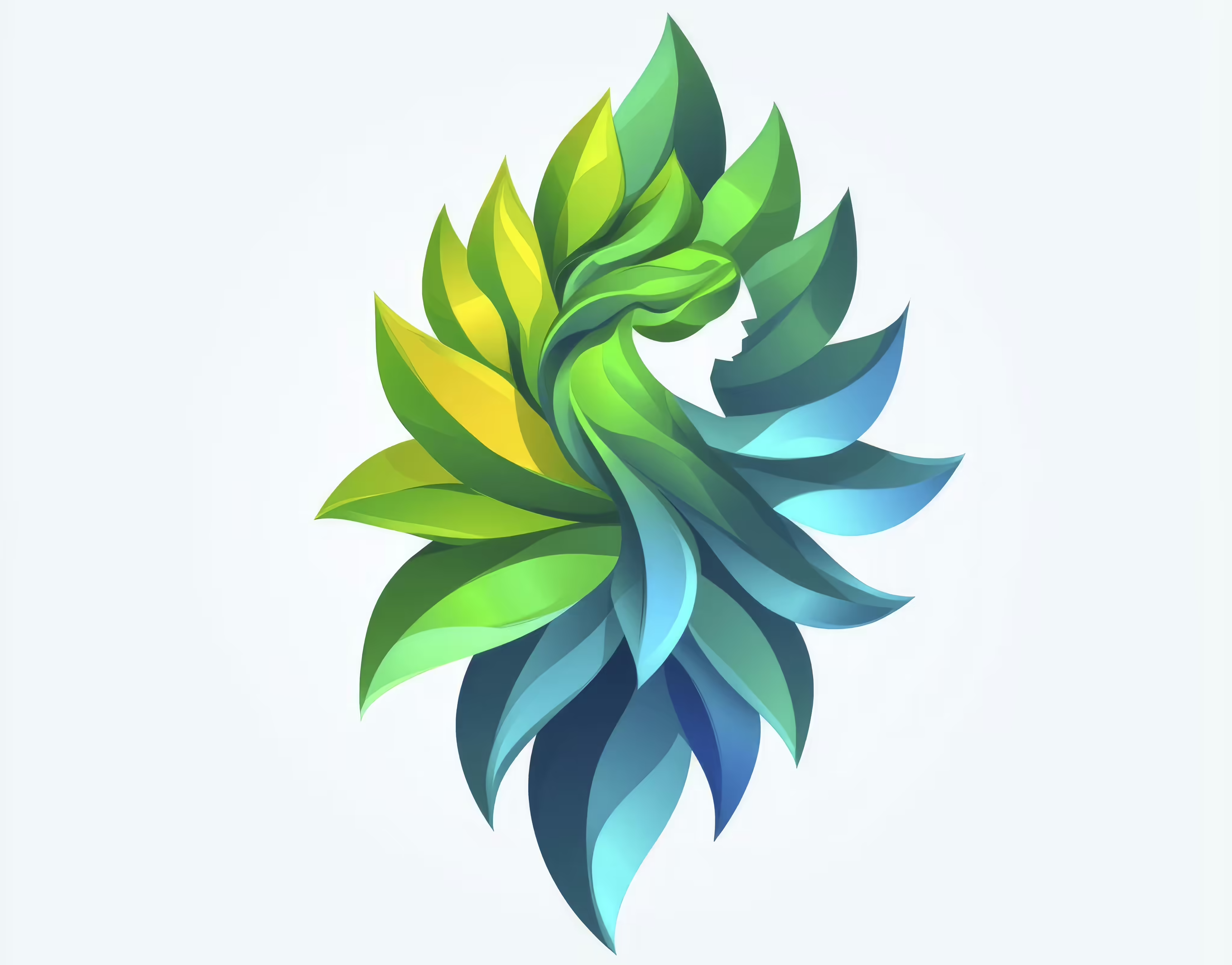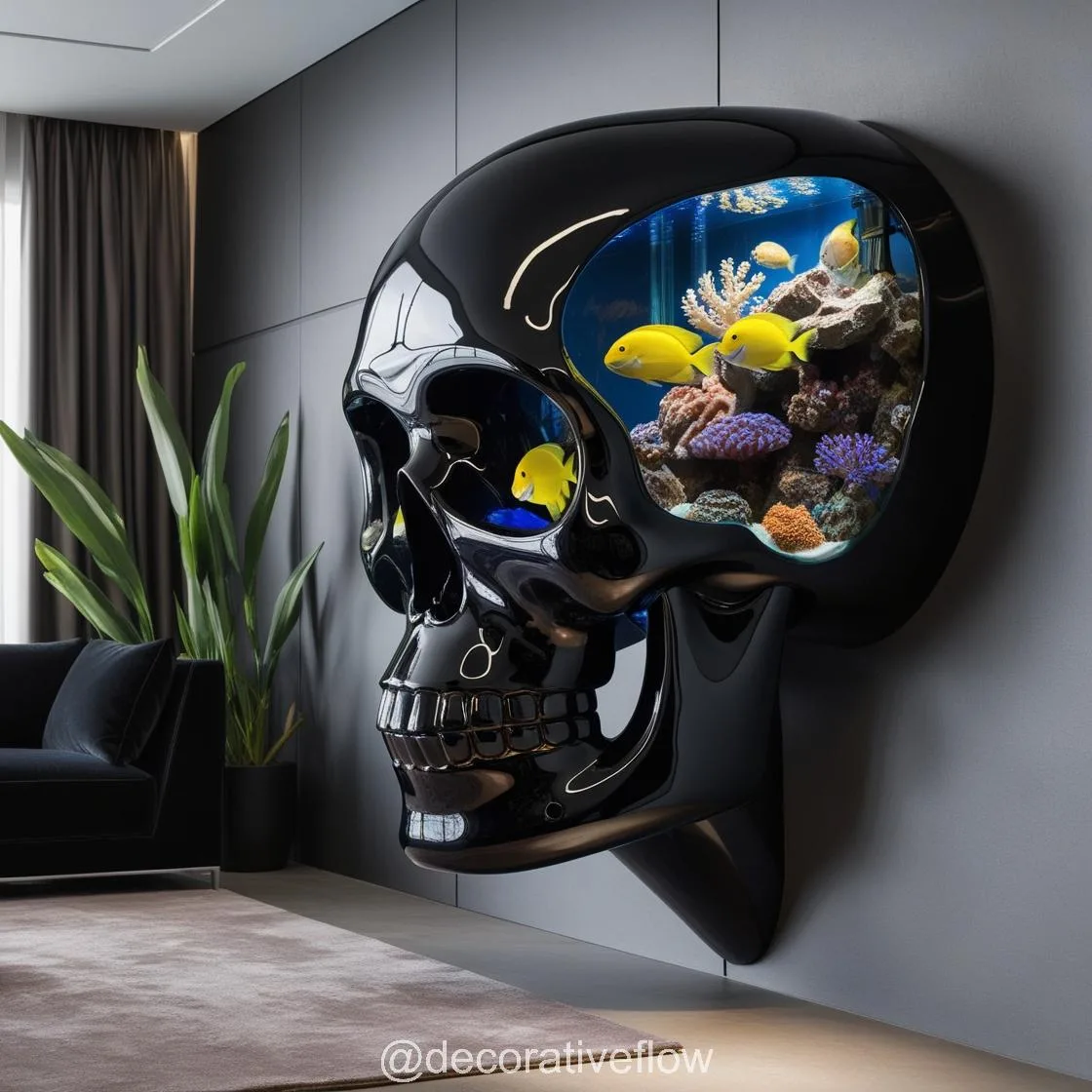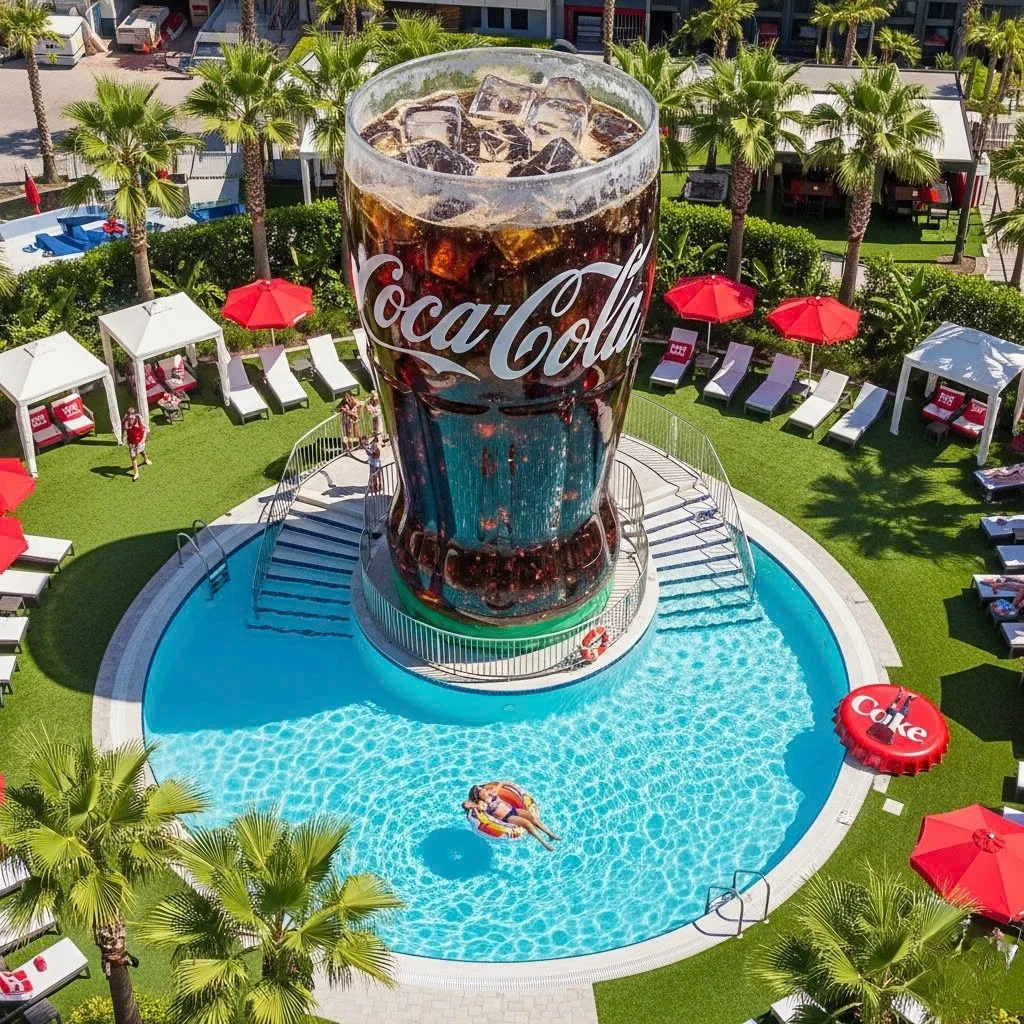Aquariums have long been a source of peace, beauty, and wonder, allowing us to bring the tranquility of underwater ecosystems into our homes and workplaces. However, aquariums are not just about showcasing vibrant fish and coral; they are also an opportunity for creative expression. One such creative trend that has taken aquarists by storm is Skull Aquariums. These unique aquariums combine the beauty of aquatic life with an intriguing, mysterious, and edgy aesthetic. Whether you are a beginner looking to make a bold statement or an experienced aquarist searching for an unconventional style, skull aquariums provide a unique design that captivates and sparks conversation.
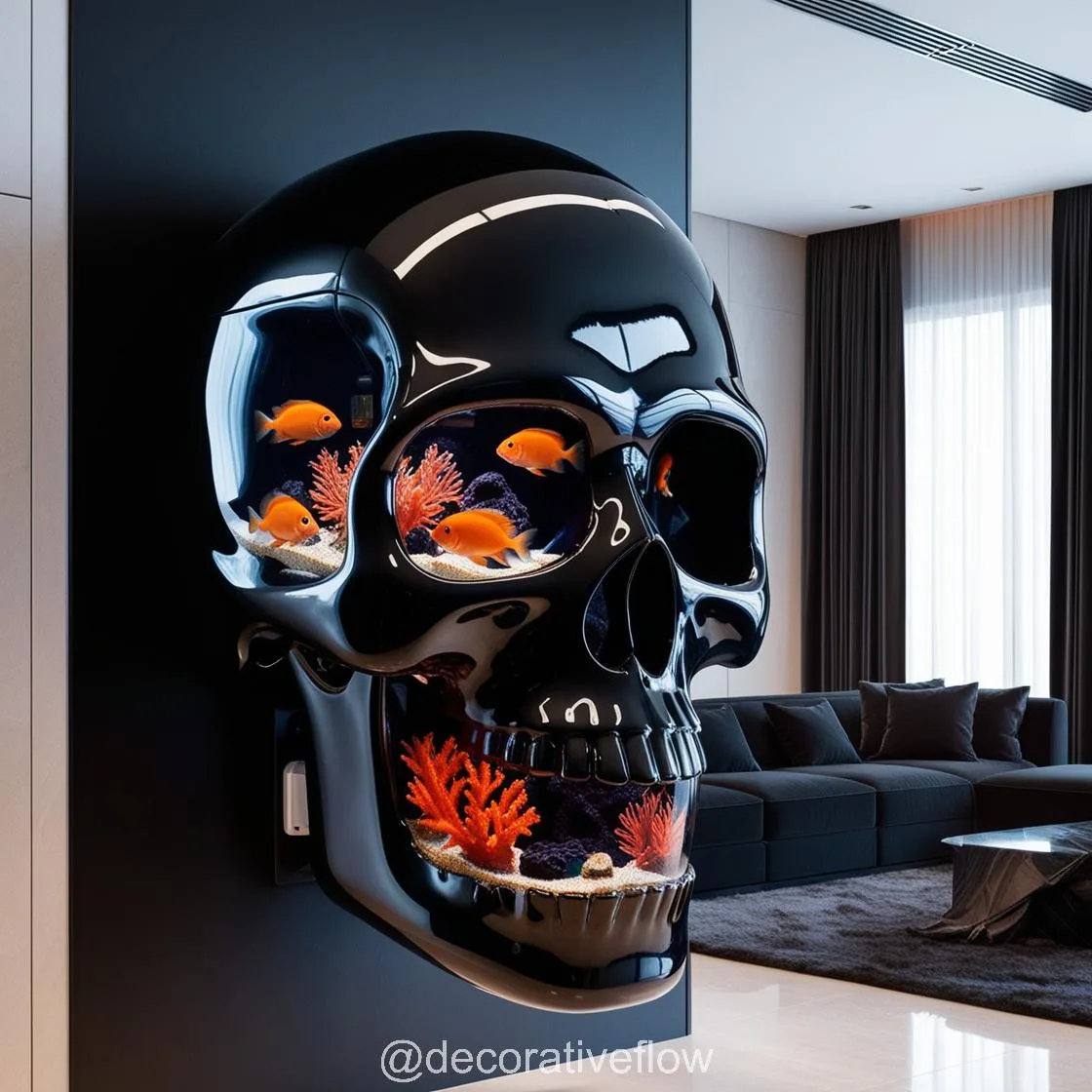
Skulls have been symbolic throughout human history, representing mystery, mortality, and artistic expression. When integrated into aquariums, skull elements add layers of visual depth and storytelling to your underwater world. This article will explore everything about skull aquariums—their appeal, how to design one, the significance of skull decorations, and tips for maintaining both beauty and balance in your setup.
Contents
The Appeal of Skull Aquariums
A Blend of Mystery and Style
One of the biggest reasons skull aquariums are gaining popularity is their ability to seamlessly blend mystery and style. A skull, whether realistic or artistic, immediately adds a unique focal point to any tank. The structure itself often resembles natural formations like caves or rock shelters, which makes it a functional decoration for fish and aquatic creatures to explore.
From ancient pirate themes to modern gothic aesthetics, skull aquariums provide a platform for creative design. The skull becomes not just a decoration but a part of the tank’s story—whether it’s a hidden treasure cave, a sunken shipwreck, or an ancient ruin reclaimed by aquatic life.
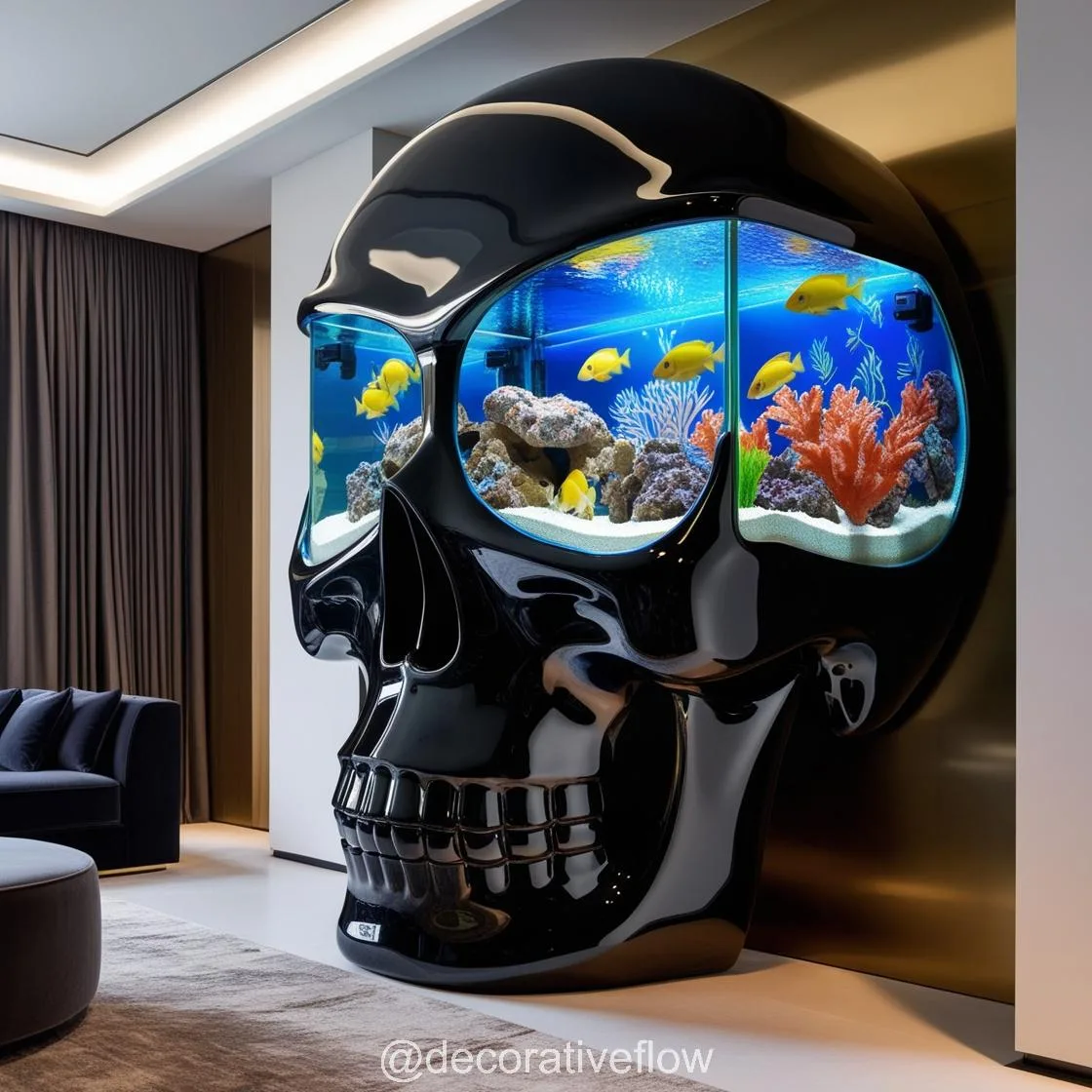
A Perfect Focal Point
In any aquarium setup, choosing a focal point is essential for capturing visual interest. Skulls offer a bold centerpiece that naturally draws attention. When carefully placed, a skull can serve as a backdrop for vibrant plants, schooling fish, and flowing water. This contrast between life and the symbol of mortality creates a fascinating harmony that speaks to the beauty of nature and the passage of time.
Personal Expression and Themes
Skull aquariums allow aquarists to showcase their personal style and interests. If you enjoy themes like mystery, gothic art, fantasy, or pirate lore, skull elements provide a perfect avenue to reflect these interests. Moreover, skulls can be incorporated into specific themes, such as:
- Pirate Shipwreck: Pair skull decorations with treasure chests, shipwreck ornaments, and dark-colored gravel.
- Lost Ancient World: Combine skulls with stone ruins, moss-covered rocks, and eerie lighting.
- Gothic Fantasy: Add black gravel, twisted driftwood, and ghostly lighting to complement the skull’s haunting appeal.
Each theme tells a story, making your aquarium not just a collection of fish but a piece of immersive art.
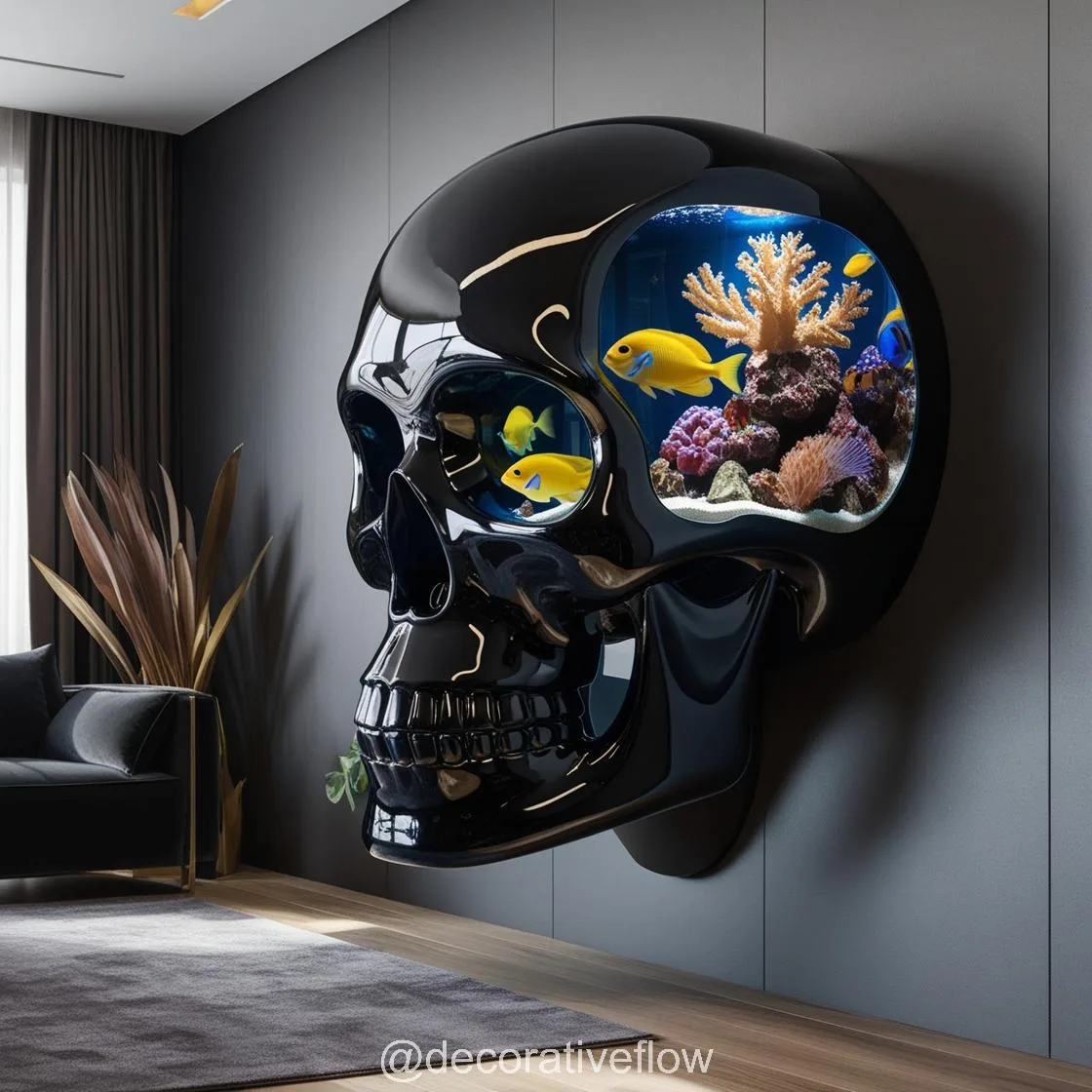
Designing Your Skull Aquarium
Choosing the Right Skull Decoration
The first step to designing a skull aquarium is selecting the right type of skull decoration. Skull ornaments come in various sizes, styles, and materials, and your choice will depend on your tank size and the overall aesthetic you wish to achieve. Some popular options include:
- Realistic Skulls: These closely mimic the appearance of real animal or human skulls, creating an authentic and eerie look.
- Artistic Skulls: These may include intricate carvings, designs, or exaggerated shapes that add a creative touch.
- Miniature Skulls: Smaller skull decorations are perfect for nano aquariums or as part of a larger aquascape.
- Skull Caves: These functional ornaments provide hiding spots for fish, helping them feel safe and secure.
Ensure that any skull decoration you purchase is aquarium-safe, made from non-toxic materials, and suitable for underwater use.

Choosing Your Tank Size and Placement
The size of your tank will determine the scale of your skull decorations and overall design. For smaller tanks, one or two miniature skulls can serve as a subtle focal point. For larger tanks, a life-sized or oversized skull can become a dramatic centerpiece that transforms the entire look of the aquarium.
Placement is key to achieving balance and harmony in your design. Some tips for skull placement include:
- Place the skull slightly off-center to create a natural and visually interesting layout.
- Use surrounding elements like plants, rocks, and driftwood to integrate the skull into the environment.
- Create depth by placing smaller decorations in the foreground and larger skulls in the background.
Incorporating Plants and Hardscape
To create a visually stunning skull aquarium, balance is essential. Adding natural elements like aquatic plants, rocks, and driftwood will soften the skull’s harsh appearance and create a more cohesive underwater world.
- Aquatic Plants: Use plants like Java ferns, Anubias, and moss to grow around or inside the skull for a natural, aged look.
- Rocks and Gravel: Dark-colored rocks and gravel complement the skull’s mysterious aesthetic while adding contrast.
- Driftwood: Twisted pieces of driftwood can enhance the gothic or ancient theme of your skull aquarium.
Lighting for Atmosphere
Lighting plays a significant role in setting the mood of your skull aquarium. Subtle and eerie lighting can elevate the mysterious aura of the skull while highlighting its details. Consider these lighting techniques:
- Use dim LED lights with blue or green tones to create a haunting underwater glow.
- Position lights to cast shadows through the skull for added depth and drama.
- For themed aquariums, colored lights (like red or purple) can enhance the atmosphere.

Symbolism of Skulls in Aquariums
The Artistic and Historical Meaning of Skulls
Throughout history, skulls have been powerful symbols in art, religion, and culture. They often represent mortality, the passage of time, and the impermanence of life. When used in aquariums, skulls take on a different yet equally profound meaning. They serve as reminders of nature’s cycle—life, death, and rebirth—which are all present in underwater ecosystems.
In art and design, skulls also signify mystery, beauty in imperfection, and the coexistence of light and dark. Integrating skulls into aquariums allows aquarists to embrace this symbolism while creating an awe-inspiring habitat.
A Contrast Between Life and Symbolism
One of the most fascinating aspects of skull aquariums is the contrast between life and symbolism. Fish and plants represent vitality and growth, while the skull symbolizes decay and mystery. This juxtaposition creates a visually striking narrative that reflects the balance and beauty of the natural world.
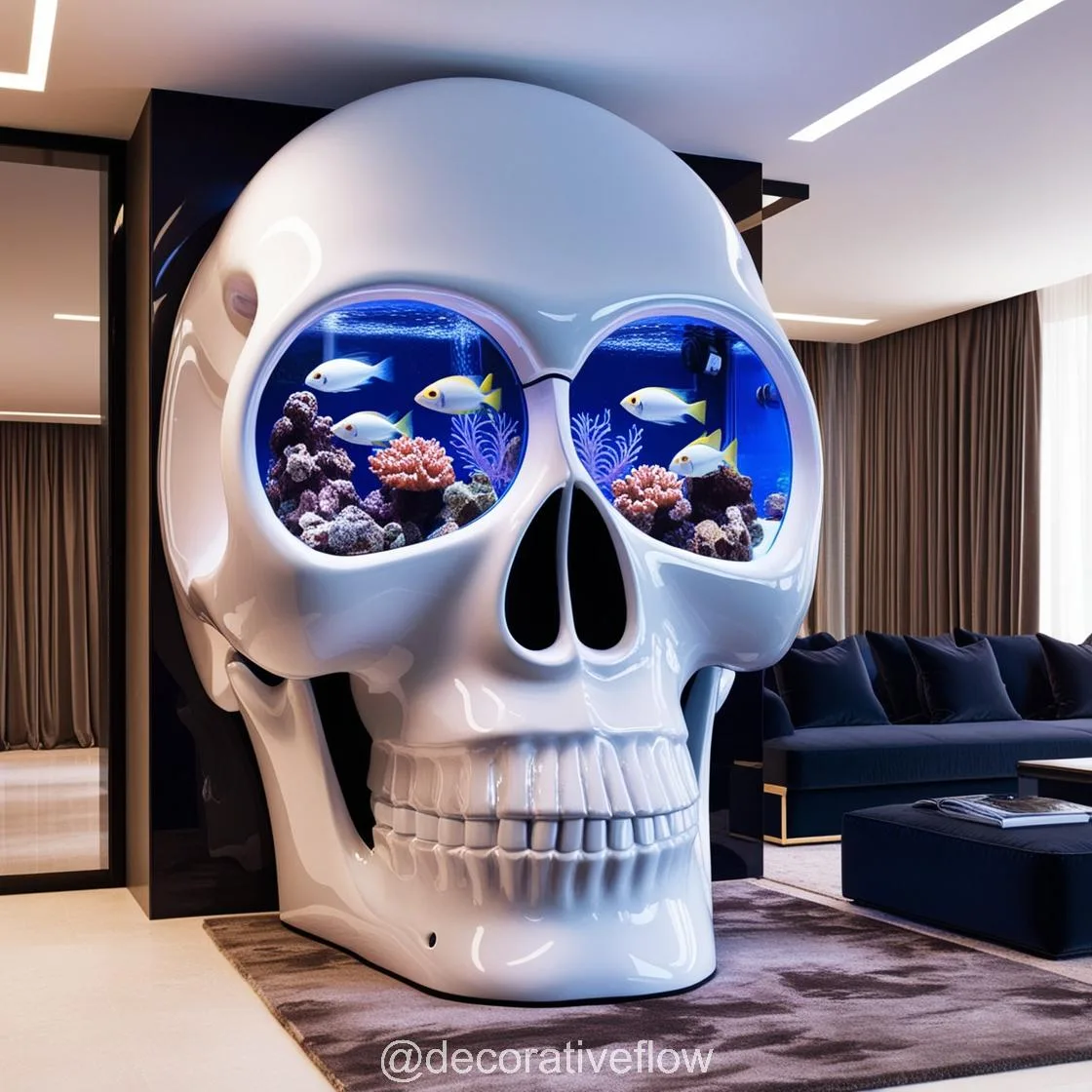
Caring for Your Skull Aquarium
Choosing the Right Fish and Inhabitants
When designing a skull aquarium, it’s important to choose fish and aquatic creatures that complement the setup. Peaceful species that enjoy exploring caves and decorations are ideal. Consider the following:
- Betta Fish: Betta fish thrive in smaller tanks and look stunning against a skull-themed backdrop.
- Corydoras Catfish: These bottom-dwellers love exploring caves and crevices.
- Tetras: Schooling fish like neon tetras add vibrant movement that contrasts beautifully with a skull centerpiece.
- Shrimp and Snails: These small invertebrates will clean your tank while adding variety to the habitat.
Maintenance Tips
To keep your skull aquarium healthy and beautiful, follow these maintenance tips:
- Clean Decorations Regularly: Over time, algae and debris can build up on skull decorations. Use a soft brush or sponge to gently clean them.
- Monitor Water Quality: Maintain proper water parameters to ensure the health of your fish and plants.
- Prune Plants: Trim aquatic plants regularly to prevent overgrowth and maintain the aesthetic balance of the tank.
- Check for Safety: Ensure skull decorations do not have sharp edges that could harm fish.
Balancing Aesthetics and Function
While aesthetics are important, your aquarium’s functionality should never be compromised. Skull decorations should provide hiding spots and enhance the habitat rather than obstruct swimming space. Carefully plan your layout to ensure both beauty and comfort for your fish.
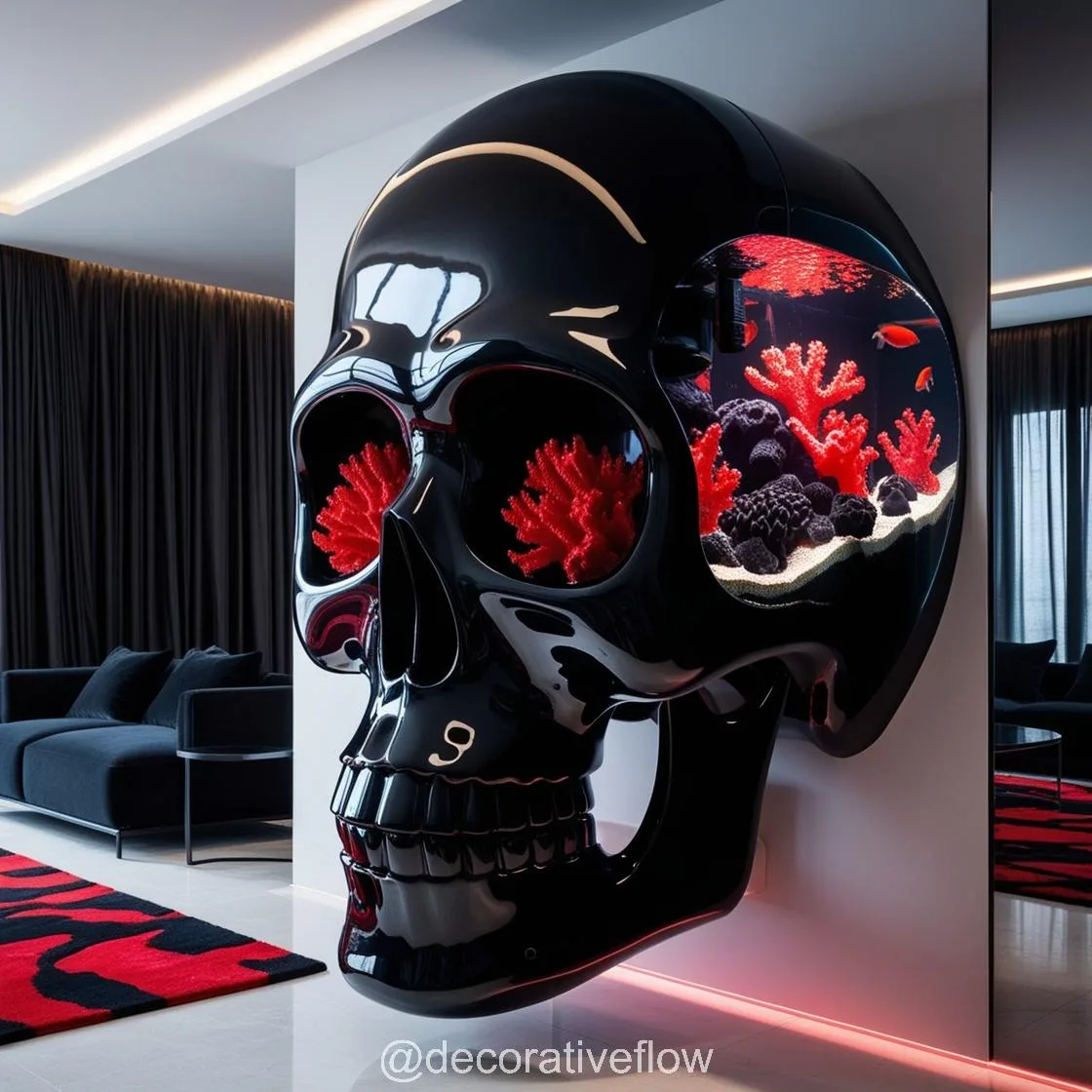
Conclusion
Skull aquariums offer a unique blend of mystery, style, and symbolism that transforms a traditional aquarium into a captivating underwater world. Whether you prefer a gothic aesthetic, an ancient ruin theme, or a bold pirate shipwreck design, skull decorations provide endless opportunities for creativity and self-expression.
Beyond their visual appeal, skull aquariums tell a story about life, death, and the beauty of nature. They remind us of the balance that exists in underwater ecosystems—a balance that aquarists strive to replicate in their tanks.
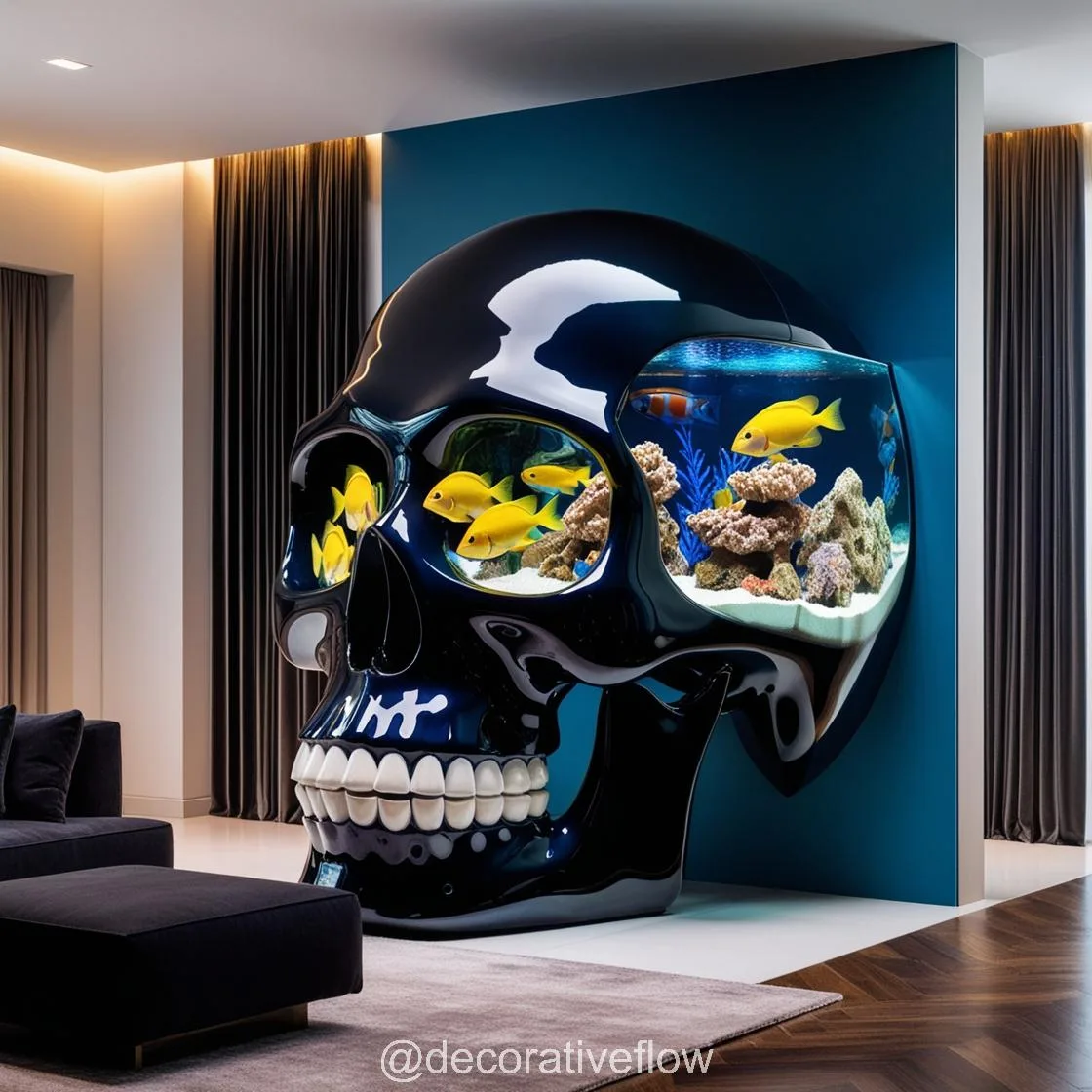
Designing a skull aquarium is not just about adding decorations; it’s about creating an immersive, meaningful, and visually stunning habitat that reflects both your personality and your appreciation for aquatic life.
